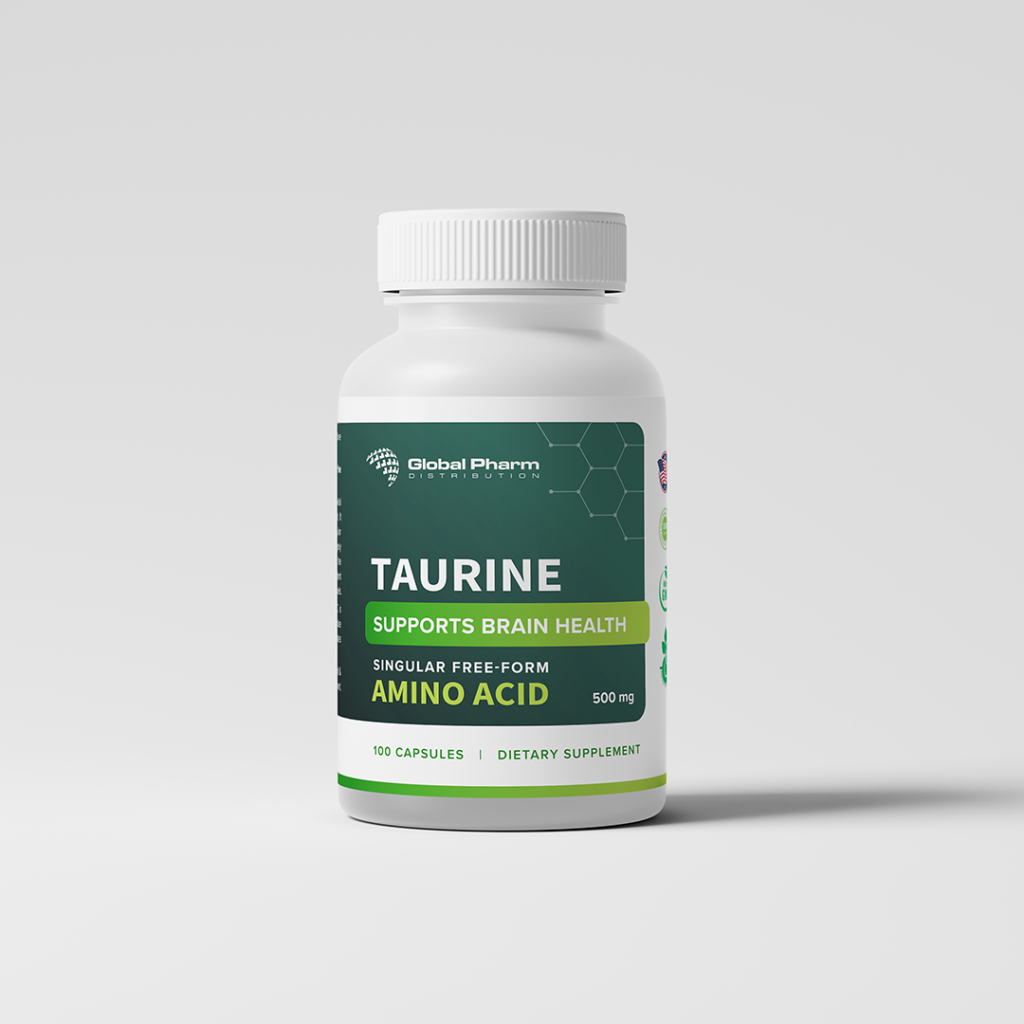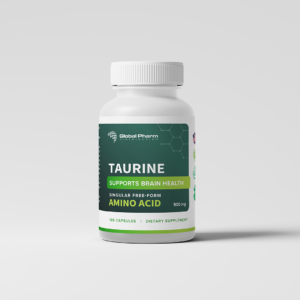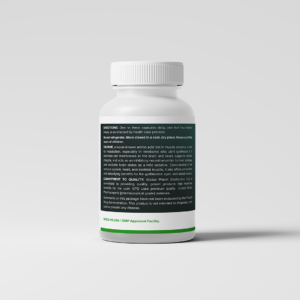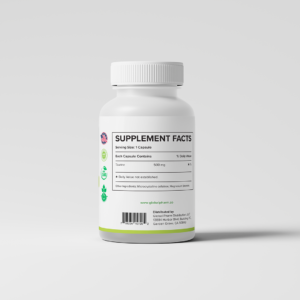Description
NDC: 53335-090-14 (capsule), 53335-091-29 (powder)
Weight: 4 Oz
Taurine, a lesser-known sulfur-containing amino acid not incorporated into muscle proteins, plays a vital role in metabolism, particularly in electrically active tissues like the brain and heart, where it stabilizes cell membranes and supports cellular integrity. Essential for newborns who cannot synthesize it, taurine is highly concentrated in the nervous system, skeletal muscle, and heart, acting as an inhibitory neurotransmitter to promote neural balance. Its primary use has been in treating epilepsy and excitable brain states as a mild sedative, while also exhibiting antioxidant and detoxifying properties in the gallbladder, eyes, and blood vessels. Recent research indicates taurine may extend healthy lifespan by reducing cellular senescence, improving mitochondrial function, and supporting metabolic health, with benefits for cardiovascular risks and exercise performance (e.g., Singh et al. 2023).
Taurine is particularly beneficial for individuals seeking neurological support, heart health, or overall vitality. Manufactured using premium pharmaceutical-grade materials in a GMP-approved facility in the USA, Taurine is free of fillers, binders, or coloring agents, with no known side effects when used as directed.
Directions: Take 1-3 capsules daily or as advised by your healthcare provider. Pair with vitamins and minerals; GPD’s MVM (Multivitamin) is recommended. Powder equivalent: 1/4 level teaspoon per capsule.
Key Benefits
- Supports Brain Health: Acts as an inhibitory neurotransmitter for neural stability.
- Enhances Cardiovascular Function: Stabilizes heart cell membranes.
- Promotes Metabolic Balance: Provides antioxidant and detoxifying effects.
References
- Singh P, et al. (2023). “Taurine deficiency as a driver of aging.” Science, NIH.
- Schaffer S, et al. (2014). “Taurine physiology and metabolism in health and disease.” Amino Acids, NIH.
- Ripps H, Shen W. (2012). “Review: Taurine: A ‘very essential’ amino acid.” Molecular Vision, NIH.
- Wu G. (2009). “Amino acids: Metabolism, functions, and nutrition.” Amino Acids, NIH.
These statements have not been evaluated by the Food and Drug Administration. This product is not intended to diagnose, treat, cure, or prevent any disease. Consult a doctor or medical professional before use, especially if pregnant, nursing, or taking medications.
Additional Information The following points provide insight into Taurine levels and their association with various health conditions, reflecting its role in metabolism:
- Normal Range: 50-100 µmol/L (approximate clinical range).
- Conditions Associated with Low Levels:
- Newborns or premature infants (inability to synthesize)
- Vegetarian/vegan diets (limited dietary intake)
- Heart failure or metabolic syndrome (reduced levels linked to aging)
- Conditions Associated with High Levels:
- Excessive supplementation (rare, may cause mild digestive upset)
- Kidney dysfunction (impaired excretion)
- Certain metabolic disorders (e.g., taurinuria)
- Notes: Taurine is a semi-essential amino acid vital for cell membrane stability in the brain and heart, acting as an inhibitory neurotransmitter and antioxidant. It supports metabolic health and may extend lifespan by reducing cellular senescence. Low levels may indicate dietary or age-related deficiencies, while high levels are typically from supplementation. These associations are correlative and require further research for causal confirmation. For more technical information, please click here. Consult a doctor or medical professional before use, especially if pregnant, nursing, or taking medications.
 Global Pharm Distribution, LLC
Global Pharm Distribution, LLC




